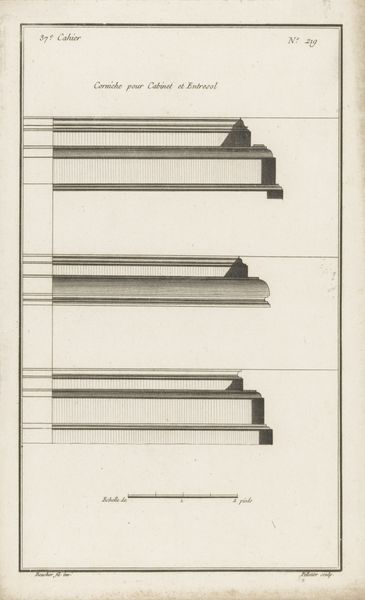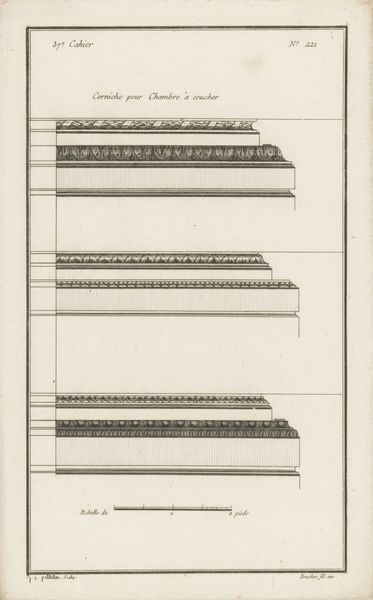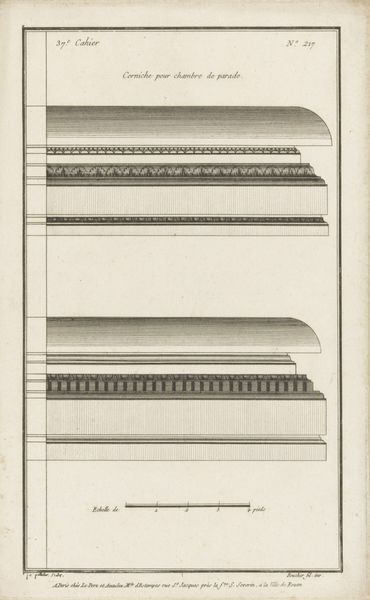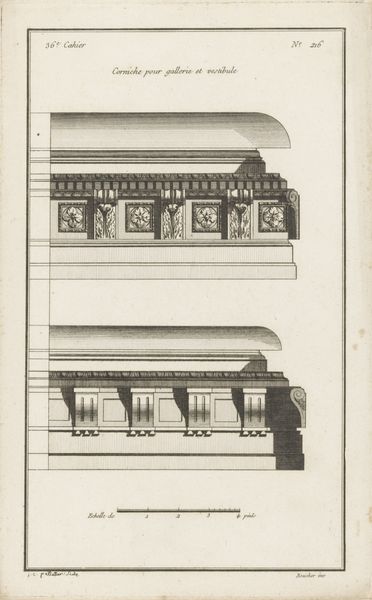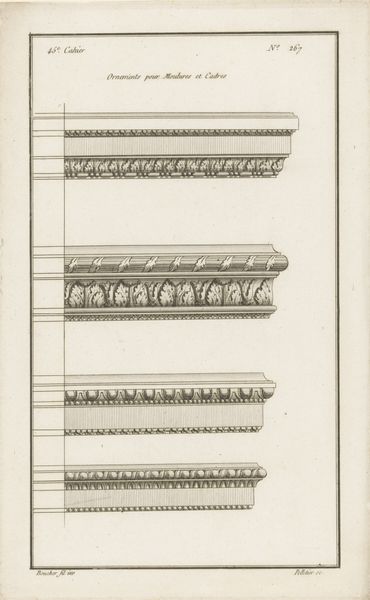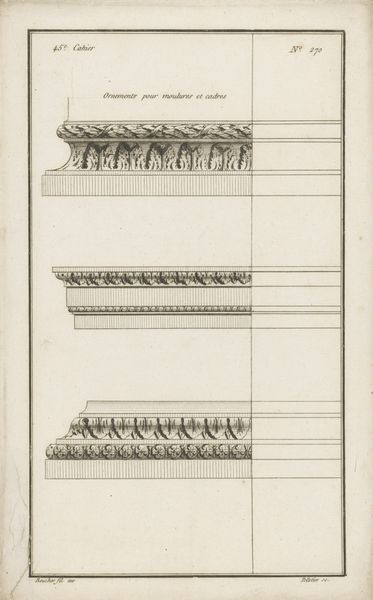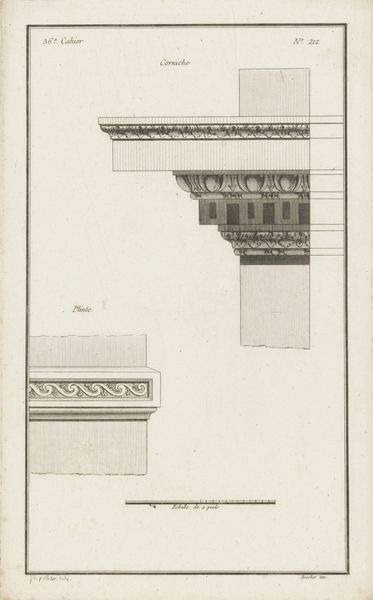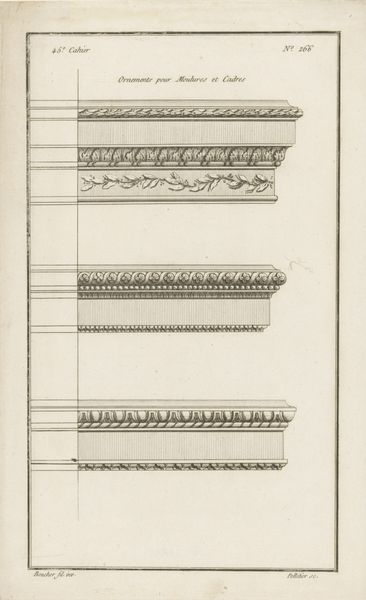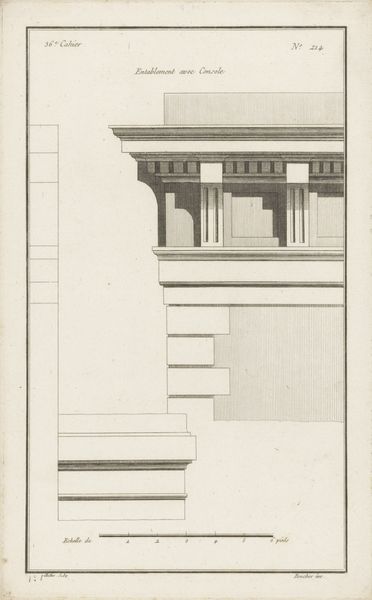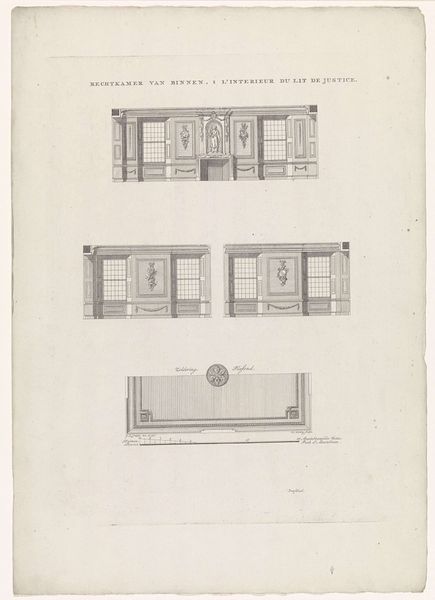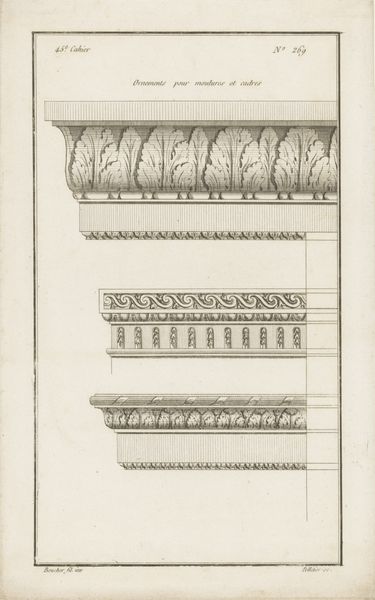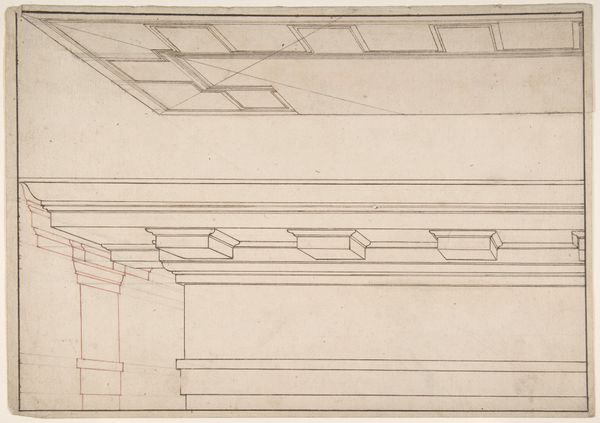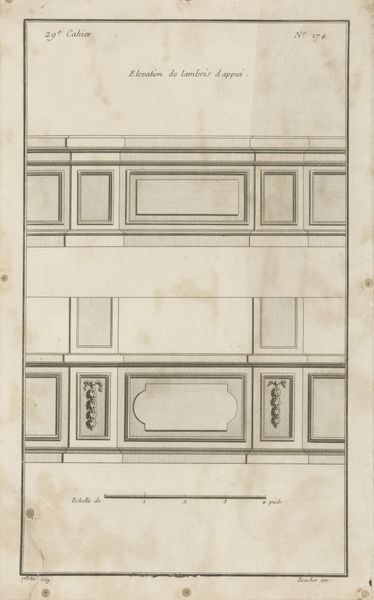
drawing, print, engraving, architecture
#
drawing
#
neoclacissism
# print
#
old engraving style
#
geometric
#
line
#
academic-art
#
engraving
#
architecture
Dimensions: height 335 mm, width 204 mm
Copyright: Rijks Museum: Open Domain
Jean Pelletier made this print, "Hoofdgestel en kroonlijst," or "Capital and Cornice," most likely in France sometime in the late 18th century. It's an etching, a printmaking technique that relies on acid to bite into a metal plate, and it depicts architectural details in elevation. Now, architecture at this time wasn't just about building; it was about expressing ideas. The classical orders, like the ones Pelletier illustrates, carried connotations of reason, order, and civic virtue that were central to Enlightenment thought. Architects and designers looked to ancient Greece and Rome for models of ideal beauty and social organization. But prints like this weren't just aesthetic exercises. They served a crucial function in disseminating architectural knowledge, allowing builders and craftsmen to replicate classical forms across Europe and its colonies. Looking at Pelletier's print, we can delve into the libraries and academies of the period, tracing the circulation of ideas and the social networks that shaped architectural practice.
Comments
No comments
Be the first to comment and join the conversation on the ultimate creative platform.
